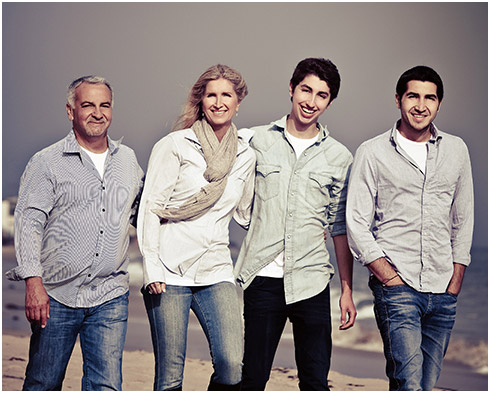This is the second post in Michelle’s three part series on online versus brick and mortar retail in the fashion industry (part one is here).
Karen Kane has long been a popular label with YLF regulars, who appreciate the company’s sophisticated yet practical clothing options. Upscale department stores and independent boutiques have been featuring the line for more than 30 years, ensuring the company’s growth from a two-man operation to a successful international brand.
But the winds of change that are forcing retail giants to reevaluate their business practices have blown Karen Kane’s way, too, ushering in the dawn of a new, digital era. Karen Kkane will officially become an e-retailer on July 1 with the launch of its own online store.
Karen Kane’s foray into the modern-day jungle of retail ecommerce is still grounded in tradition – the family-run business will be led into the 21st century by Michael Kane, son of the eponymous chief designer and director of marketing at the company. Michael has recently worked with Greg and Angie on several different promotions, so I was able to talk to him about the company’s upcoming launch.
Michael had the task of building Karen Kane’s online presence from the ground up, with the ultimate goal of launching a retail website. The project forced Michael to ask some fundamental questions about the company he’d literally grown up with. Who are its target customers, and what do they need? Where do they go online, and what’s the best way to engage them when they get there? What assets does the company have that its fans may not know enough about?
He started small by establishing the company on the key social networks of the day. The Karen Kane fan page on Facebook, which didn’t exist a year ago, now has more than 6,500 fans. Twitter followers now number more than 300. He says his goal was to get existing Karen Kane customers engaged with the company’s new strategy, adding that established fans will be the initial target group of the new ecommerce approach.
“If you go to a department store website right now, a lot of customers will search for a dress then stumble upon a Karen Kane dress, then they’ll buy it. They’re not necessarily looking for a Karen Kane dress. With our site, it’s really about putting out a greater selection of product so our customers who are our fans can find things that may not be in the local store.”
The next step was to determine the most effective ways of connecting with the women who sport Karen Kane clothes. Michael launched a series of contests in an effort to determine what they liked best. He soon realized that tailoring would be as important to the company’s web strategy as it is to its products. Customers, for instance, lapped up photo and video content, but weren’t often willing to contribute visual material of their own. Contests asking customers to submit photos, for instance, were unmitigated flops.
“People don’t want to see photos of themselves online on a company website. I think it asks for too much engagement. People like content and they like receiving small bits of content, but they want something that requires less commitment.”
With customer desires established, the company is finally ready to launch its online retail site. KarenKane.com currently allows visitors to browse the existing collection, but the new site will offer much more when it launches on July 1.
Michael said customers shopping Karen Kane online will have a broader selection of colours and styles to choose from, with specialty sizes and collections also just a click away.
The website will free Karen Kane from industry constraints, he said, adding the offerings currently found in brick an mortar stores are usually dictated by regional sales trends or the whims of a given fashion season.
“It’ll be really nice, because we can put out the product that we want to put out, and not only what we’re being asked to put out by other stores. It will give us some freedom to see what connects with our customers.”
The site will also feature more input from what Michael identifies as the company’s major selling point – Karen herself. A blog and multimedia content will, he hopes, give Karen broader name recognition and help her connect with the customers she has so much in common with.
“She’s very approachable. She’s a mom, she’s raised two kids. There’s something to say for having her more visible because she kind of is what the brand’s about.”
Michael doesn’t expect a huge spike in revenue when the website first goes live, but says the company has major hopes for the boost the online business will give its bottom line over the next few years.
For now, the advertising strategy will continue to rely on word of mouth and social media, he says, adding the ecommerce division will be run with the same practices that have governed the more traditional operations.
“We don’t’ think that online will replace our traditional brick and mortar business, but we think it’s a great supplement. What we’re looking to do is taking what works in stores, and what we see working in other sites, then applying it directly to our customers.”
One thing Michael hasn’t chosen to explore just yet is the way mobile technology could fit into Karen Kane’s new cyberstrategy. Other retailers, however, see a lot riding on your cell phone use. Next week we’ll look into the future of retail and your phone.
What’s your take on Karen Kane’s web strategy? Do you plan to shop the website when it launches in July? What would you like to see when it goes live?
Family business: Michael Kane (far right) with father Lonnie, Karen and brother Robert.
Michelle McQuigge is a Toronto-based journalist working as a reporter and editor at The Canadian Press. You can follow her on Twitter.










